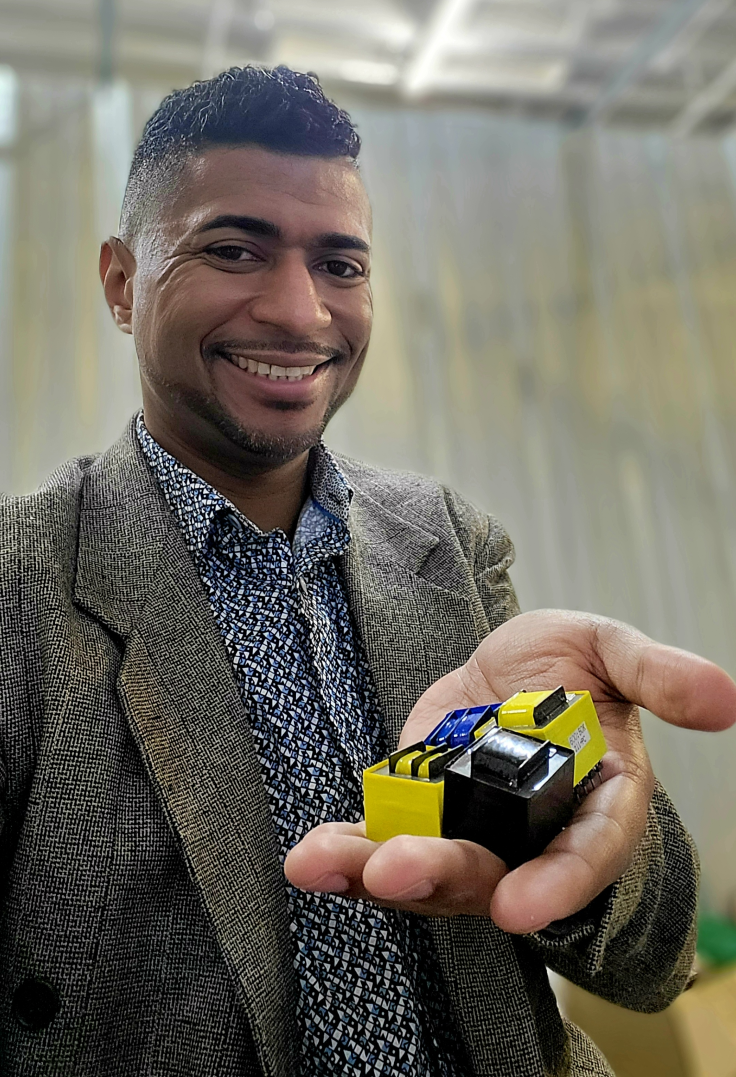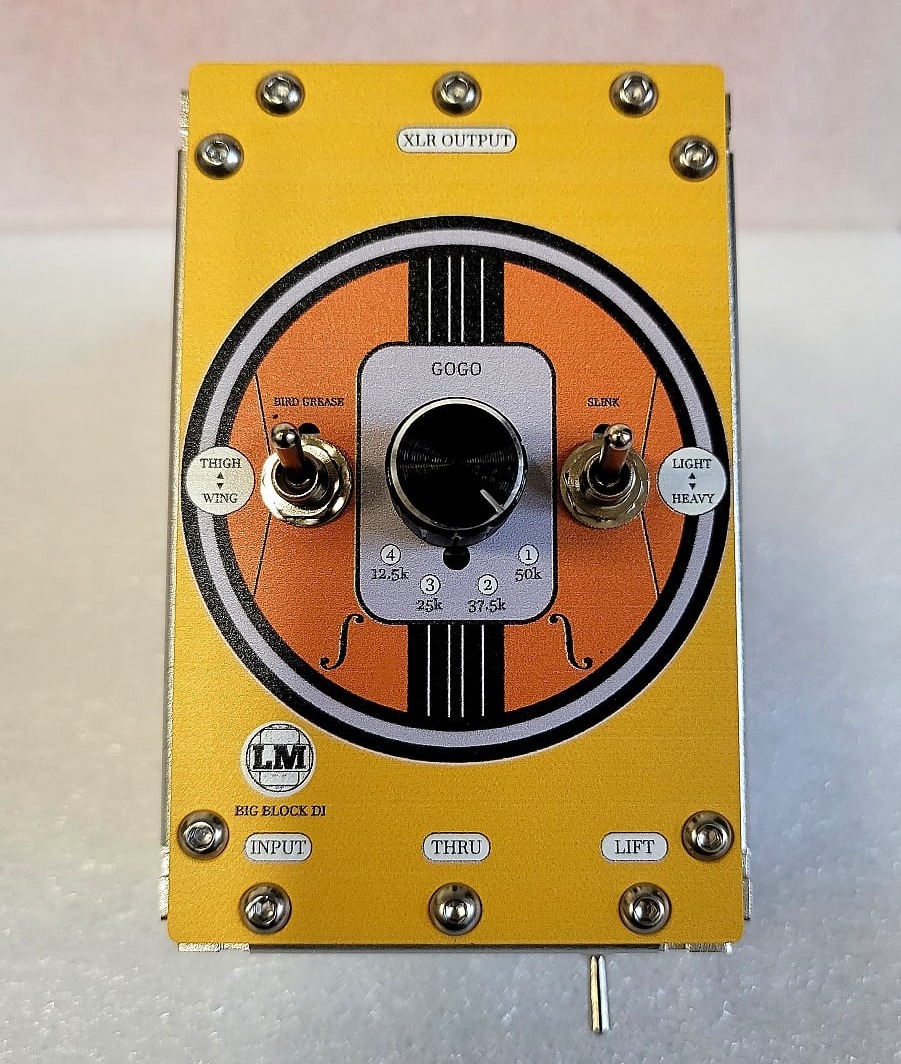If you're into recording gear, you're probably familiar with Langston Masingale's name. The founder of Handsome Audio, Langston launched the Zulu Passive Analog Tape Simulator back in 2016. Ever since, it's been a not-so-secret weapon of many producers and engineers who want the sonic benefits of magnetic tape without all its expense and hassle.
The Zulu was made possible thanks to Langston's deep understanding and love for transformers. Now, he's used that knowledge to create a characterful DI box that can impart the classic direct-input sound of Motown's and more: the Motor City Big Block DI.
Building and releasing small batches of the Big Block in the LMI Reverb Shop, they are selling out very quickly each time they become available. So add the Big Block to your Watch List after visiting the listing or follow the LMI Reverb Shop to be notified as soon as more are listed.
This new gear comes courtesy of a different company, the transformer and PCB-focused LMI (short for Langston Masingale Industries), which was born out of his desire to explore "different ways that transformers can be made in 2022," he tells Reverb. Instead of just adhering to the ways they were built in 1950 or 1940, LMI's goal is to make transformers and transformer-based products that make sounds relevant for our modern era.
More Than Meets the Eye
The transformers used in audio gear may not look like much, but their magnetic cores, wire, and metal-rich laminations change audio signals in both practical and creative ways.

The ones Langston is creating today are hefty, employing more metal than you'd find in other transformers used for similar applications. Alongside the PCB circuit boards he builds to complement them, Langston says, "These transformers produce better bass response, have higher headroom, and offer a different type of coloration."
He holds up a medium-to-large core output transformer like that of a classic tube microphone. It's about one-third the size of a 9V battery and "feels like a pack of gum," Langston says. By contrast, Langston shows one of his own, double in size and "a quarter pound" in weight. Not only is the core itself larger, but the width of the lamination is larger as well.
Langston's new transformers can be found in Erikson Labs microphones, like their 47-style Erikson-47 and C800G-style Erikson-800E, which are also powered by LMI power supplies.
Using these mic transformers as a jumping-off point, Langston built the Motor City Big Block with some of the same principals in mind, but as a passive DI box for bassists, guitars, synth players, and engineers of all kinds.
Under the Big Block's Hood
One of the pieces of gear instrumental to the sound of classic Motown recordings was the studio's DI boxes, custom-designed by engineer Ed Wolfrum. They were used to record James Jamerson's indelible basslines and the electric guitars of Eddie "Chank" Willis, Robert White, Joe Messina, and others.
Like the ACME Audio WB-3, LMI's Motor City Big Block takes inspiration from Motown's original. LMI's nods to Motown include not just that "Motor City" moniker, but also the names and functions of the controls—but it is also capable of sounds not available in Wolfram's original circuit.
Under the Big Block's hood is a large core LMI 50600BRN transformer, with "the shittiest iron I could find in addition to a combination of silicon steel," Langston says. The reason for that low-grade iron? "I wanted a transformer that would technically fail and succeed at the same time, to create sonic artifacts that flatter instruments and other sources."
The 50600 also has plenty of legs—or connective pins—that create different connections and combinations of signal flow alongside the Big Block's PCB circuit. Because the black iron of the transformer "fails" in certain areas of the top end, the circuit's design uses some or all of these failings to apply varying degrees of saturation, distortion, and character to your signal.
The central knob lets you access four different "Gogo" EQ curve settings, from the cleanest, top-end-emphasizing 50K to a much gnarlier 12.5K with both low- and mid-range bump.
The "Bird Grease" switch is an homage to James Jamerson, who was known to eat fried chicken before playing his P-Bass and never changed its strings. Functionally, Bird Grease is a top-end control: by selecting "Thigh" meat here, you get a brighter, more open sound, while the the "Wing" setting will get a darker, thicker tone.
The "Slink" switch, meanwhile, is a bottom end control that represents the walk of a bassist. It changes the output impedance of the box, but also it lowers the bottom end. A "Light" amount of Slink lets more bass shine through, while a "Heavy" amount of Slink chokes up the signal.
The result, overall, is "a DI box that has colors and curves on purpose, along with THD, that people can use to impart sounds that they'd normally need to mix later, but you can hear that sound while you're playing it," Langston says.
The applications of such a DI box are wide-open. Like the Zulu before it, the Big Block is built to withstand high levels of input—so you can, for example, feed line- or instrument-level signal through it. You can attach it at the end of a pedal chain and go straight into your interface. Or you plug in directly and use just the Big Block's settings to craft a unique, direct-in tone.
Add the Big Block to your Watch List after visiting the listing or follow the LMI Reverb Shop to be notified as soon as more are listed. Or, for more information on Langston and the Zulu tape emulator, read our previous interview.

